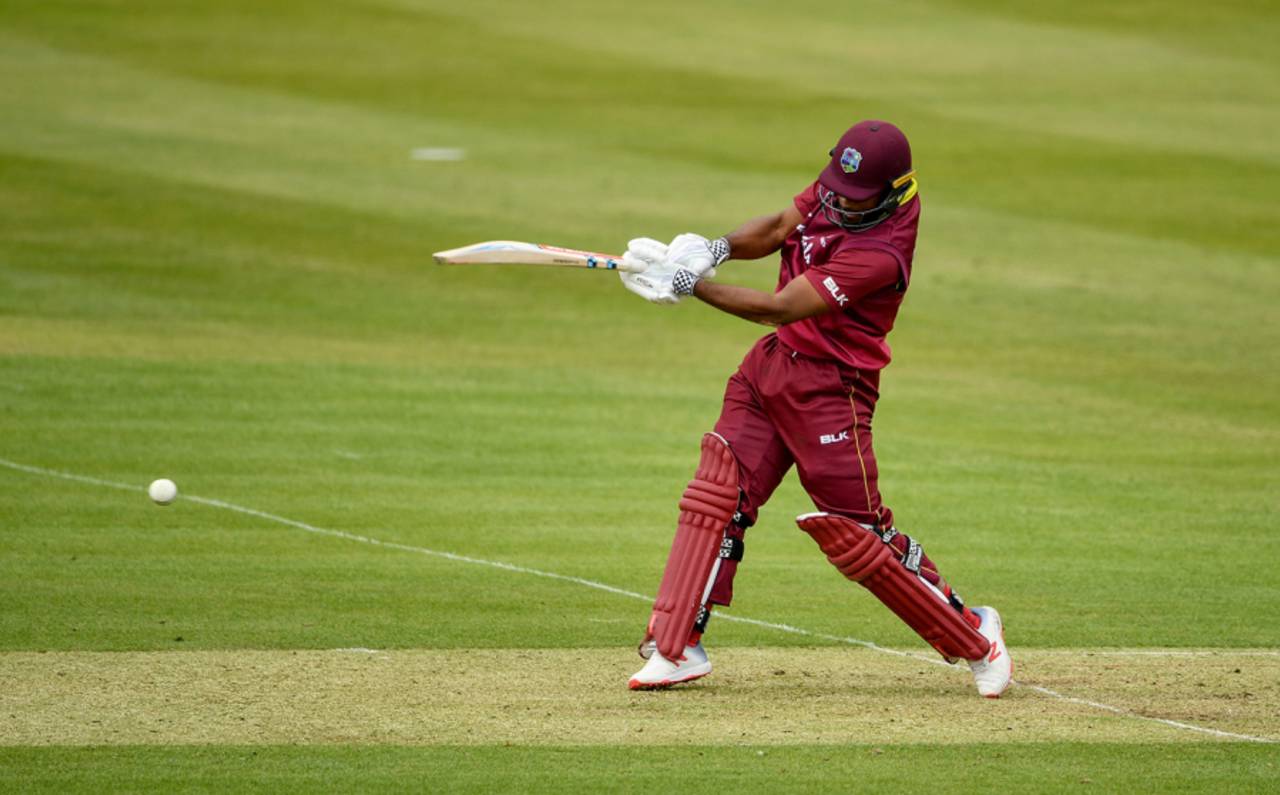What's the biggest difference between a batter's highest and next highest scores?
And what are the highest wicketless totals in ODIs?

John Campbell's highest ODI score so far is 179 and his next highest is 30 • Sportsfile via Getty Images
That undefeated 169 by Dave Callaghan came for South Africa against New Zealand in the Mandela Trophy in Centurion in 1994-95; his next highest score was indeed 45 (also not out), against India in Port Elizabeth in 1992-93. There's just one man with a bigger difference between his biggest and next highest scores in ODIs: the West Indian opener John Campbell hit 179 against Ireland in Dublin in May 2019, and 30 against England a few months earlier in Bridgetown, a difference of 149. The Ireland match was, oddly perhaps, the last of Campbell's six ODIs to date - and any future involvement might depend on him overturning a recent ban for a doping violation.
The first T20 World Cup (then called the World Twenty20) took place in South Africa in 2007; the upcoming tournament will be the eighth. The leading run-scorer to date - and the only man with more than 1000 runs overall - is Sri Lanka's Mahela Jayawardene, with 1016. Chris Gayle is currently second with 965, and Tillakaratne Dilshan third on 897. Then come a trio of current players who are set to play in the 2022 edition in Australia: Rohit Sharma with 847 runs, Virat Kohli 845, and David Warner 762.
I think the answer to this one hinges on the fact that the Trinidad wicketkeeper Sammy Guillen played Tests for both West Indies and New Zealand. In Auckland in 1951-52, Guillen stumped John Reid off the bowling of West Indies' slow left-armer Alf Valentine.

That match in Milton Keynes in June 1999 is easily the record total in a women's one-day international without losing a wicket. The partnership featured centuries by wicketkeeper Reshma Gandhi and 16-year-old Mithali Raj, both of whom were making their ODI debuts.
This record was broken during the just finished English season: playing against Kent in Beckenham in May 2022, Surrey made 671 for 9 declared, with the highest individual contribution being 96, from Ollie Pope. Ben Foakes and Jamie Overton also made it into the nineties without reaching three figures; in all there were seven half-centuries (plus a 44), and the only man not to reach 20 was Hashim Amla, who was out for 12. In doing so, Surrey broke their own record for the County Championship: in Bristol in 2005, the highest contribution to their total of 603 against Gloucestershire was Azhar Mahmood's 89.
Steven Lynch is the editor of the updated edition of Wisden on the Ashes